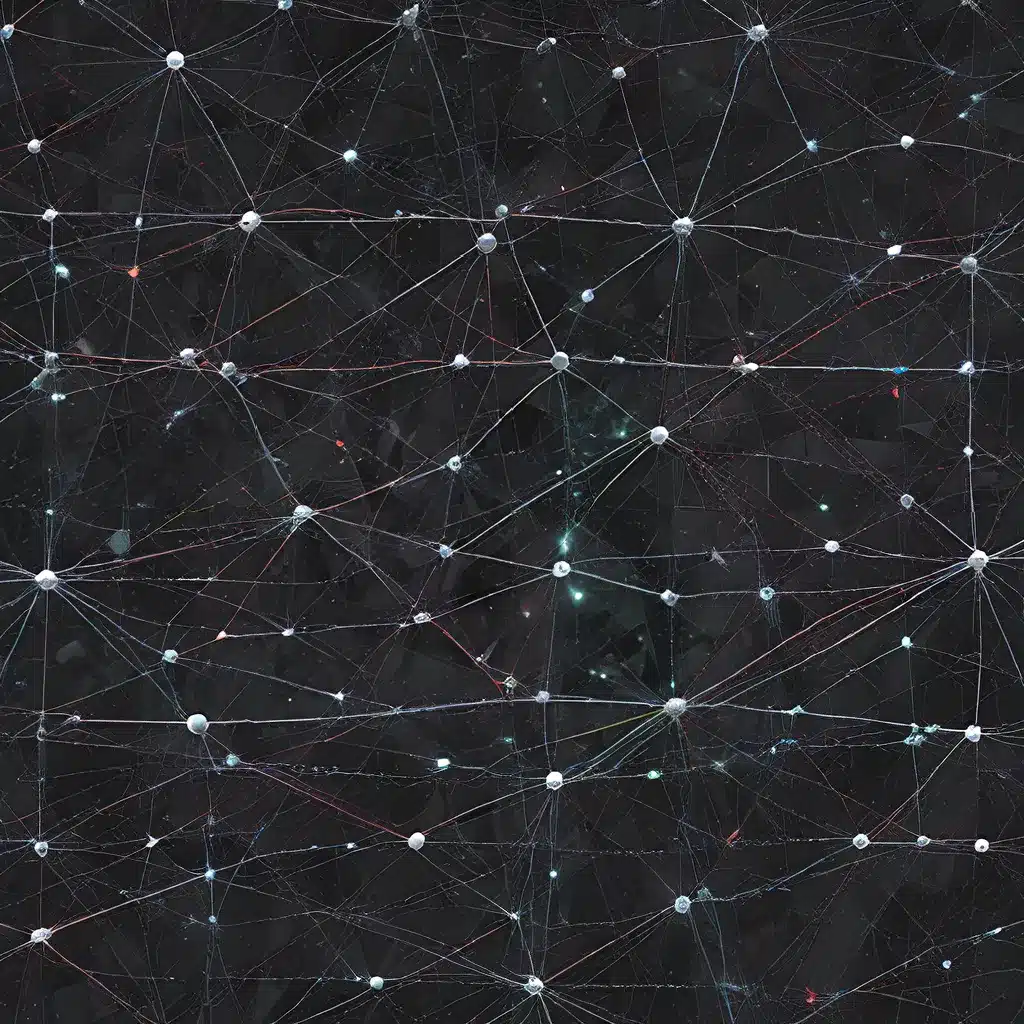
Navigating the Complexities of Sensor Network Design
Sensor networks have become an integral part of the Internet of Things (IoT) ecosystem, enabling a wide range of applications, from industrial automation to environmental monitoring. As these networks grow in scale and complexity, the challenge of fault diagnosis and adaptive resilience has emerged as a critical concern.
In this article, we’ll explore the distributed algorithms that are reshaping the landscape of sensor network design, addressing the need for adaptive fault diagnosis and energy management in these dynamic systems.
Understanding Sensor Network Architecture
Sensor networks are typically composed of a large number of sensor nodes that collect and transmit data to a central base station or gateway. These nodes can be dispersed across a wide geographic area, forming a distributed and decentralized system.
One of the key aspects of sensor network design is the topology, which can vary from star and mesh to cluster-based configurations, each with its own advantages and trade-offs. The choice of topology directly impacts the resilience, scalability, and energy efficiency of the network.
Researchers have developed advanced distributed algorithms to optimize sensor network topologies, enabling self-organization and adaptive reconfiguration in response to faults or changes in the environment.
Adaptive Fault Diagnosis in Sensor Networks
Fault diagnosis is a critical challenge in sensor networks, as the distributed and dynamic nature of these systems can lead to a wide range of failures, from sensor malfunctions to communication issues.
Distributed algorithms for adaptive fault diagnosis have emerged as a solution to this problem. These algorithms leverage local and cooperative decision-making among sensor nodes to detect, identify, and isolate faults within the network.
Key features of these algorithms include:
- Decentralized Monitoring: Sensor nodes continuously monitor their own health and the status of their neighboring nodes, sharing this information in a distributed manner.
- Fault Detection: Anomaly detection techniques are used to identify potential faults, such as sensor degradation or communication errors.
- Fault Identification: Collaborative diagnostics algorithms are employed to pinpoint the root cause of the detected faults, enabling targeted remediation.
- Fault Isolation: Reconfiguration strategies are implemented to isolate the faulty components and reroute network traffic, ensuring continued operation of the sensor network.
By leveraging distributed and adaptive algorithms, sensor networks can self-heal and maintain a high level of reliability and availability, even in the face of unexpected failures.
Optimizing Energy Efficiency in Sensor Networks
Energy management is another critical aspect of sensor network design, as these systems often operate in remote or inaccessible locations, where battery replacement or recharging can be challenging.
Distributed algorithms for energy optimization have been developed to address this challenge, focusing on balancing the energy consumption of individual sensor nodes and extending the overall network lifetime.
Key strategies employed by these algorithms include:
- Dynamic Duty Cycling: Sensor nodes adaptively adjust their duty cycles, alternating between active and sleep modes to conserve energy while maintaining monitoring and communication capabilities.
- Load Balancing: Collaborative load distribution algorithms are used to equalize the energy consumption among sensor nodes, preventing premature depletion of individual nodes.
- Energy-Aware Routing: Distributed routing protocols are designed to minimize the energy required for data transmission, favoring shorter and more efficient communication paths.
- Harvesting-Aware Adaptation: Sensor nodes can harvest energy from renewable sources, such as solar or vibration, and dynamically adjust their behavior to leverage these energy-harvesting capabilities.
By optimizing the energy efficiency of sensor networks through distributed algorithms, network operators can extend the operational lifetime of these systems, reducing the maintenance and deployment costs associated with battery replacement or recharging.
Securing Sensor Networks Against Cyber Threats
As sensor networks become increasingly interconnected and integrated with the IoT, the security of these systems has emerged as a critical concern. Distributed algorithms for adaptive security have been developed to detect and mitigate cyber threats, ensuring the integrity and confidentiality of sensor network data.
Key security measures employed by these algorithms include:
- Anomaly Detection: Distributed anomaly detection techniques are used to identify suspicious activity or deviations from normal sensor network behavior, alerting network operators to potential cyber attacks.
- Secure Data Aggregation: Distributed data aggregation algorithms are designed to securely collect and transmit sensor data, encrypting the information and verifying the integrity of the data.
- Secure Routing: Distributed secure routing protocols are employed to establish trusted communication paths between sensor nodes, preventing unauthorized access and data tampering.
- Adaptive Access Control: Distributed access control mechanisms are implemented to dynamically manage the permissions and privileges of sensor nodes and authorized users, mitigating the risk of unauthorized access.
By integrating distributed algorithms for adaptive security, sensor network operators can enhance the resilience of their systems against evolving cyber threats, safeguarding the critical data and infrastructure that underpins the IoT.
The Future of Sensor Networks: Towards Autonomy and Resilience
Sensor networks are poised to play an increasingly vital role in the IoT ecosystem, enabling a wide range of applications and transforming the way we interact with the physical world.
As these systems continue to grow in scale and complexity, the need for adaptive and resilient approaches to fault diagnosis, energy management, and security will become even more crucial.
Distributed algorithms will be at the forefront of these advancements, empowering sensor networks to self-organize, self-heal, and self-protect, reducing the burden on human operators and ensuring the reliable and efficient operation of these critical infrastructures.
By embracing the power of distributed algorithms, the sensor network and IoT communities can unlock new possibilities for autonomous and resilient systems, driving the technological revolution that will shape the future of our connected world.
Visit sensor-networks.org to explore more insights and resources on the latest advancements in sensor networks and IoT technologies.